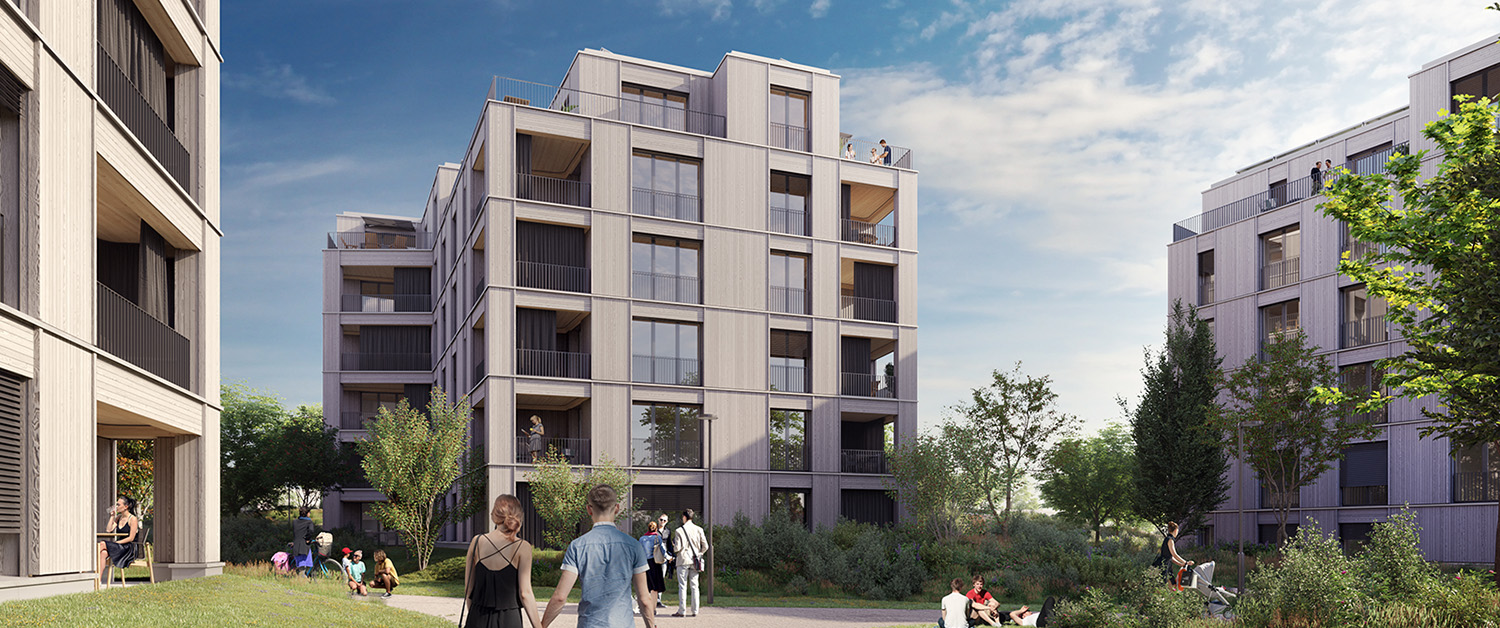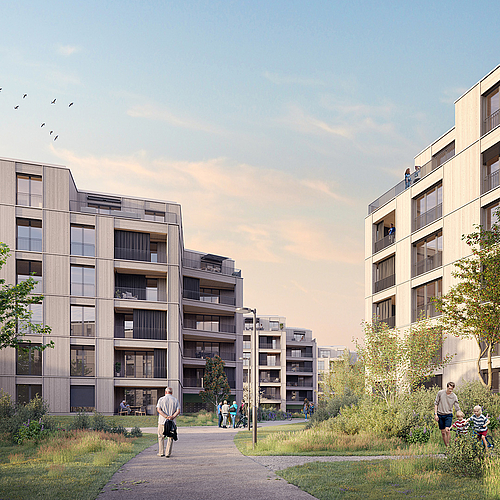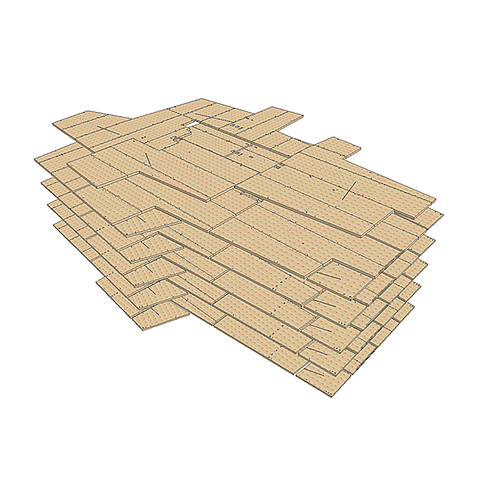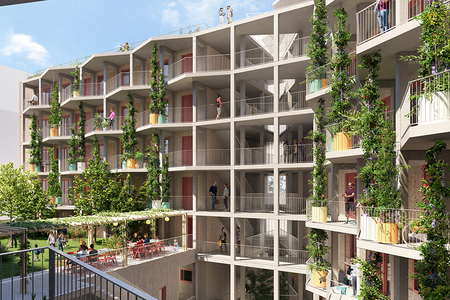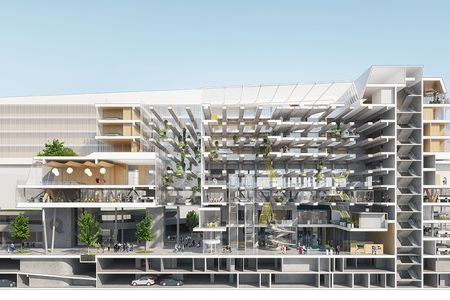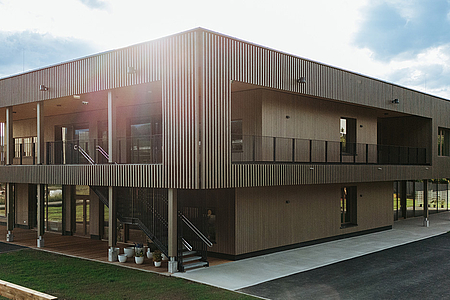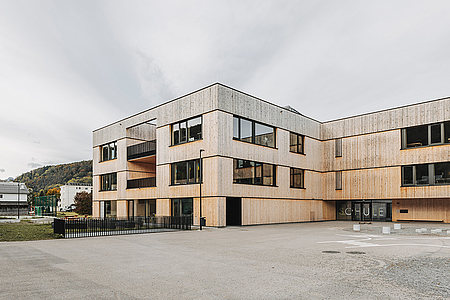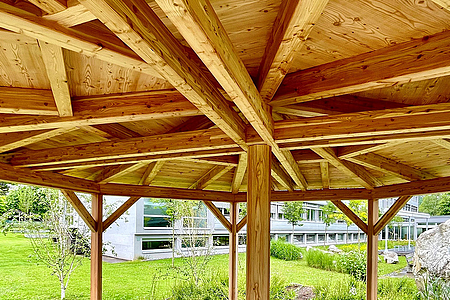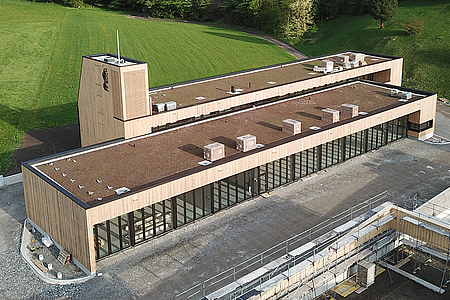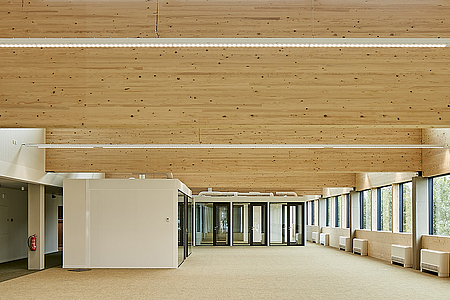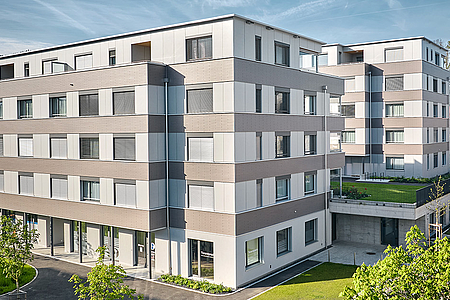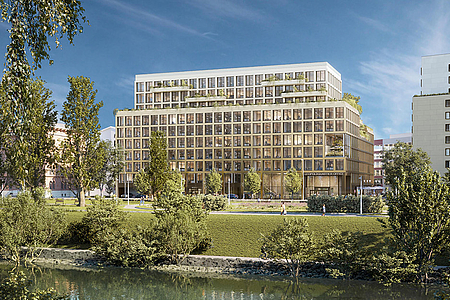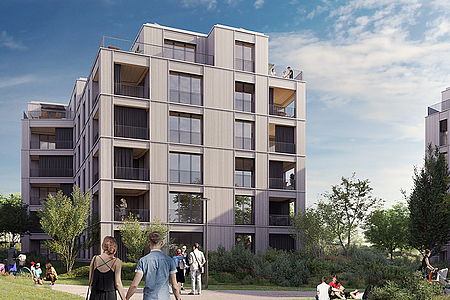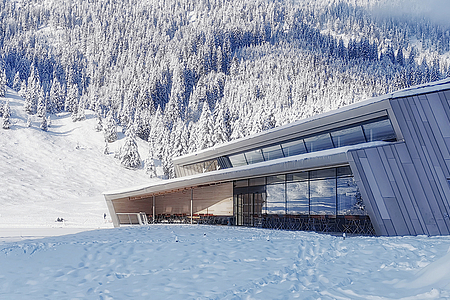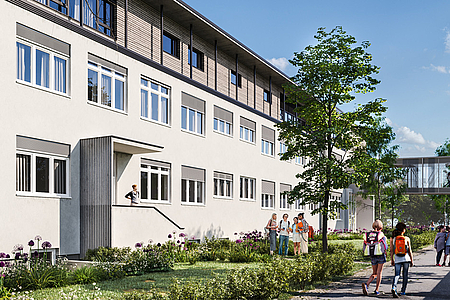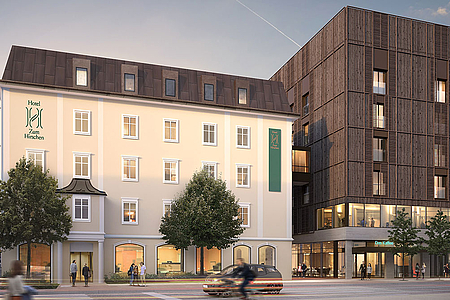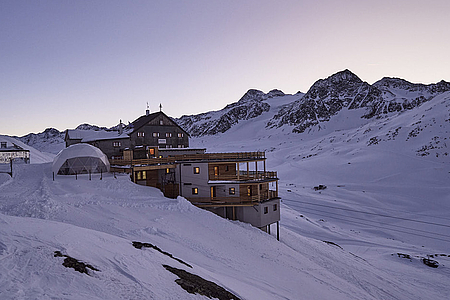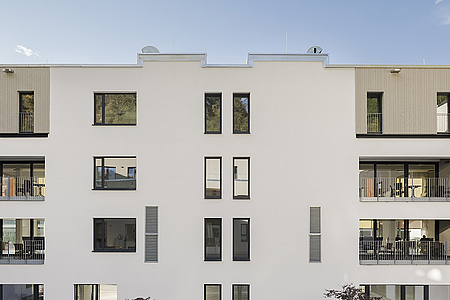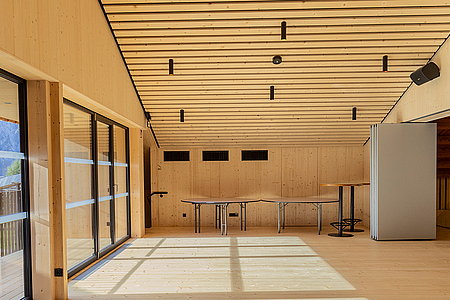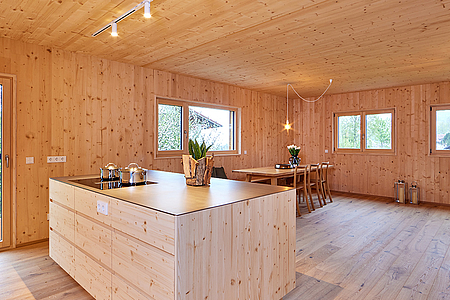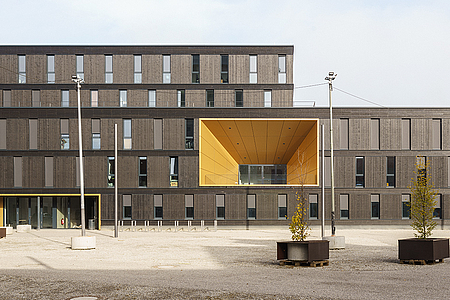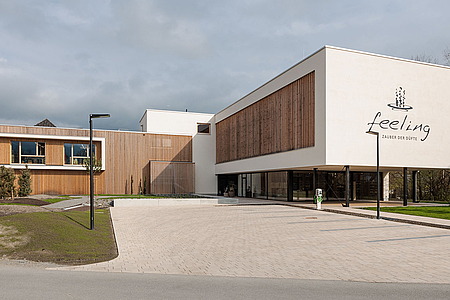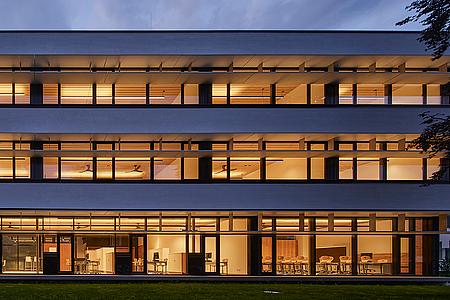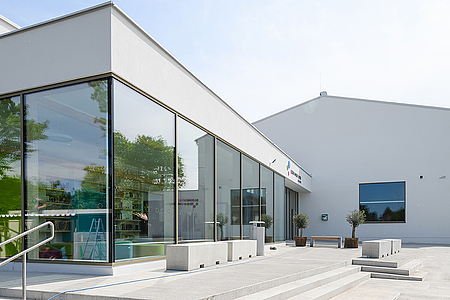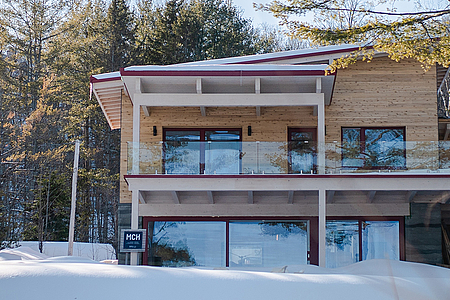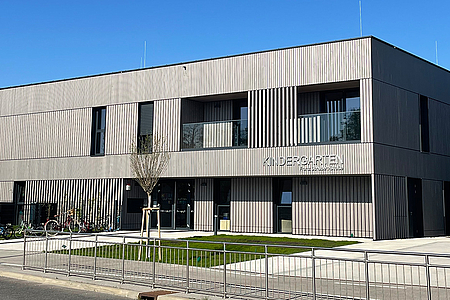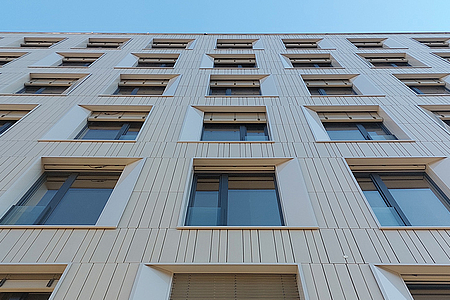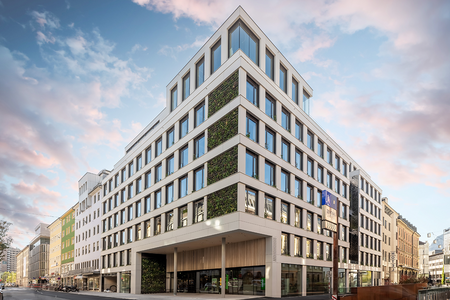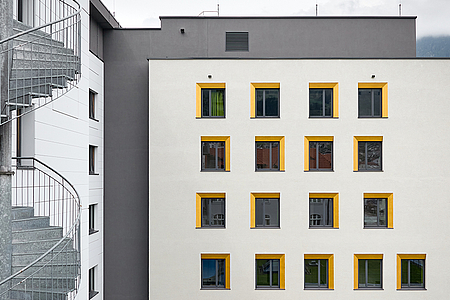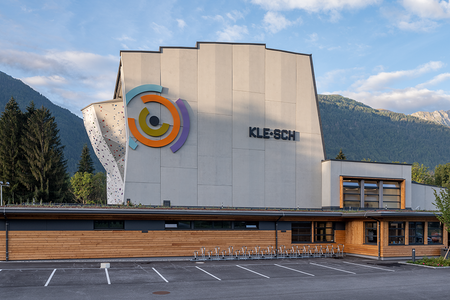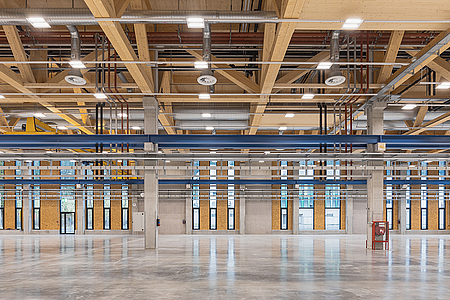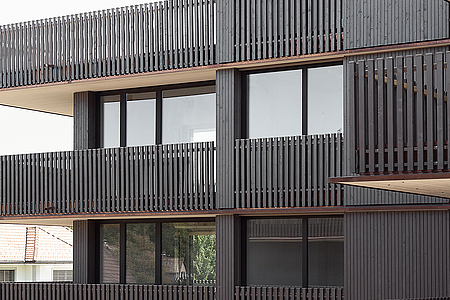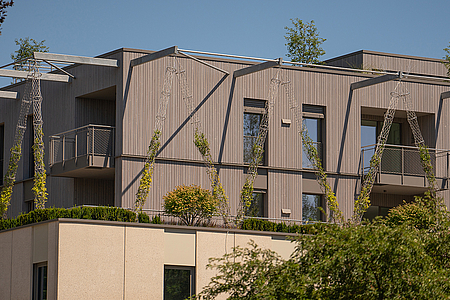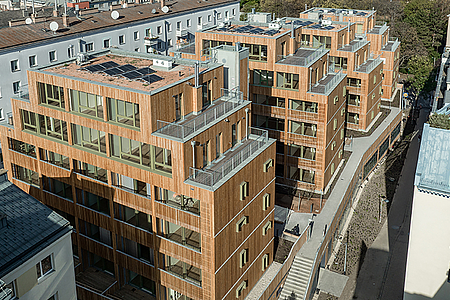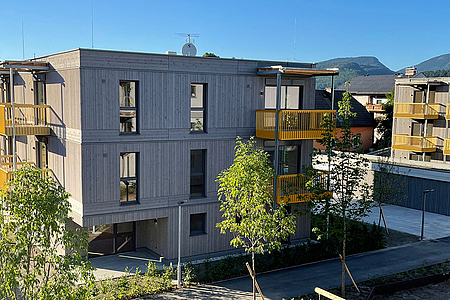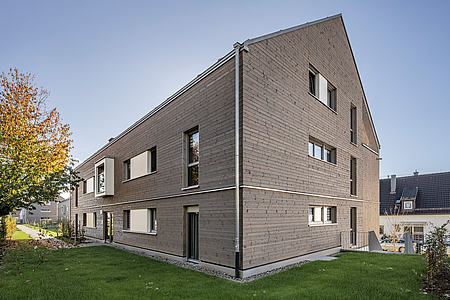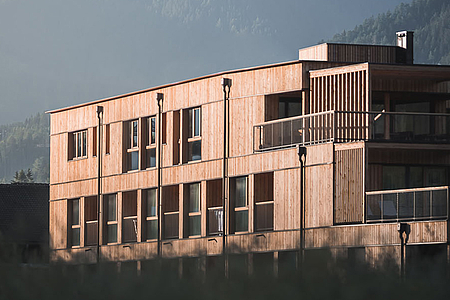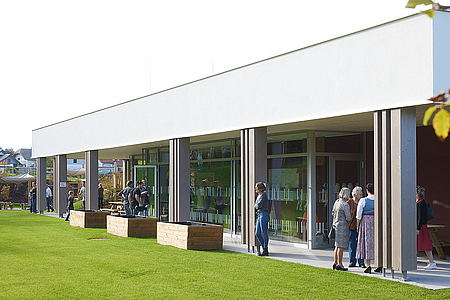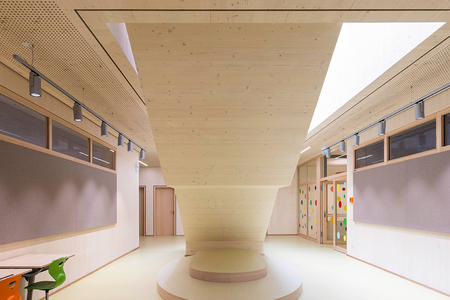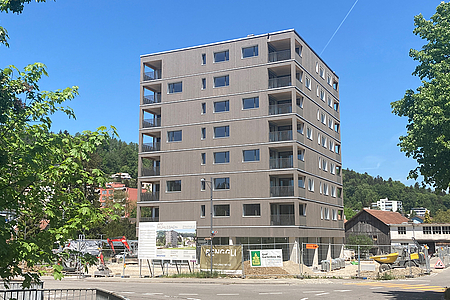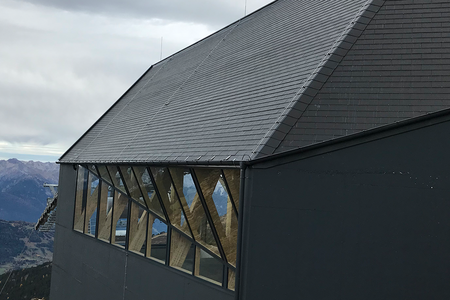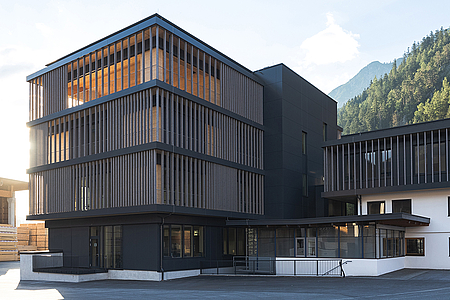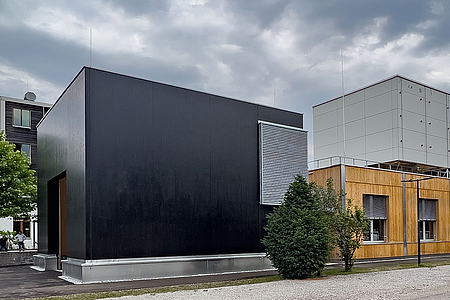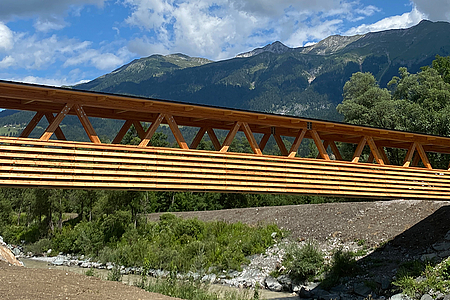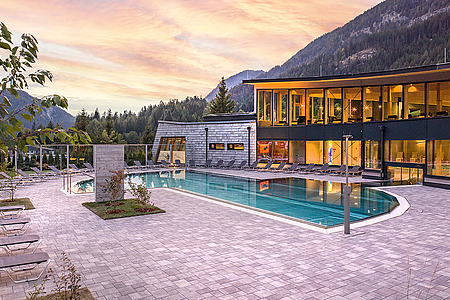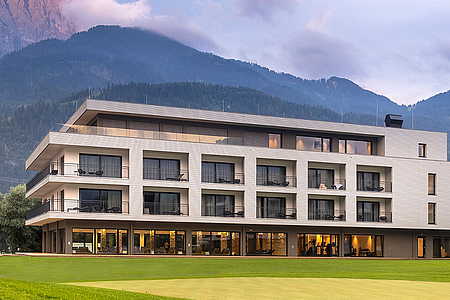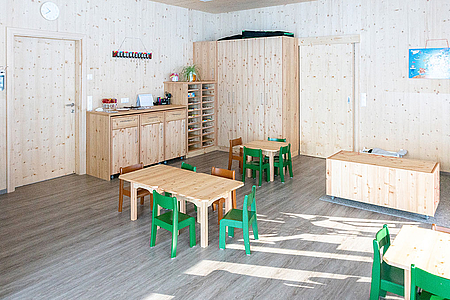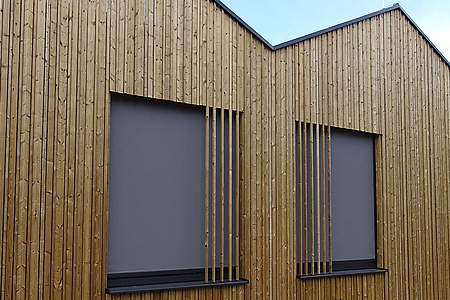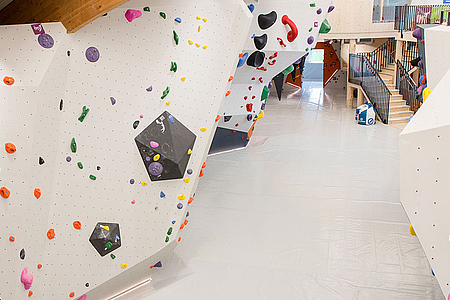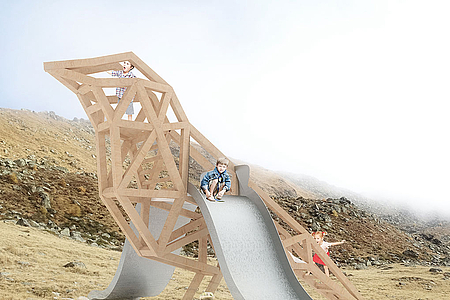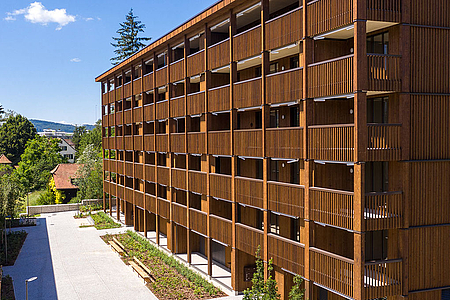Project "Im Zelg"
An environmentally conscious neighbourhood development rises up
An environmentally conscious neighbourhood development is being built on Zelgstrasse in Uster in the Canton of Zurich. With five residential buildings and a total of 164 wooden rental apartments, the area combines modern living with the natural material wood. The solid wood product CLTPLUS is used for the ceiling elements.
The new planning by Rhomberg Bau AG creates a concept for five buildings with environmentally conscious construction and futuristic technologies. Regarding the timber construction, it was necessary to use a system that statically permits a two-axis tensioned timber construction. This challenge can be solved with TS3 as a key technology. This creates a beam-free skeletal structure with frontal joint grouting. At THEURL, a primer and assembly sealing tape are applied to the CLTPLUS ceiling element at the factory. The joints are poured on the construction site. This has the advantage of flexibility as well as the creation of point-supported floor slabs without fasteners and pressure.
The first residential building
The conditions for the first residential building have already been created. The basement and the stairwell are made with prefabricated concrete elements in order to significantly shorten the construction time. A total of 691 m³ of CLTPLUS ceiling elements will be delivered for the floor ceilings from April to the end of June, with a weather protection film for the 4th floor being installed at the factory. This protects the components from moisture on the construction site. To ensure that the 155 components are delivered to the construction site just in time, the logistical challenge is solved with the company's own swap trailers. A total of 3,500 m³ of CLTPLUS ceiling elements will be installed in the five residential buildings, which bind around 3.1 tons of CO2 from the atmosphere.
In the outdoor area, modern living combines with a lifestyle close to nature. A special feature of Zelgstrasse is its incorporation of the “sponge city” principle. If the root system is allowed to develop properly, then a tree functions similarly to a sponge. Instead of simply channelling and discharging water from heavy rains or floods, it is absorbed and stored locally by the trees. In addition to trees, water retention zones are also used. These are natural or artificially created areas, which serve to retain and store rainwater and slowly release it when needed. Unsealed surfaces allow water to penetrate the ground instead of draining into the sewer system.

